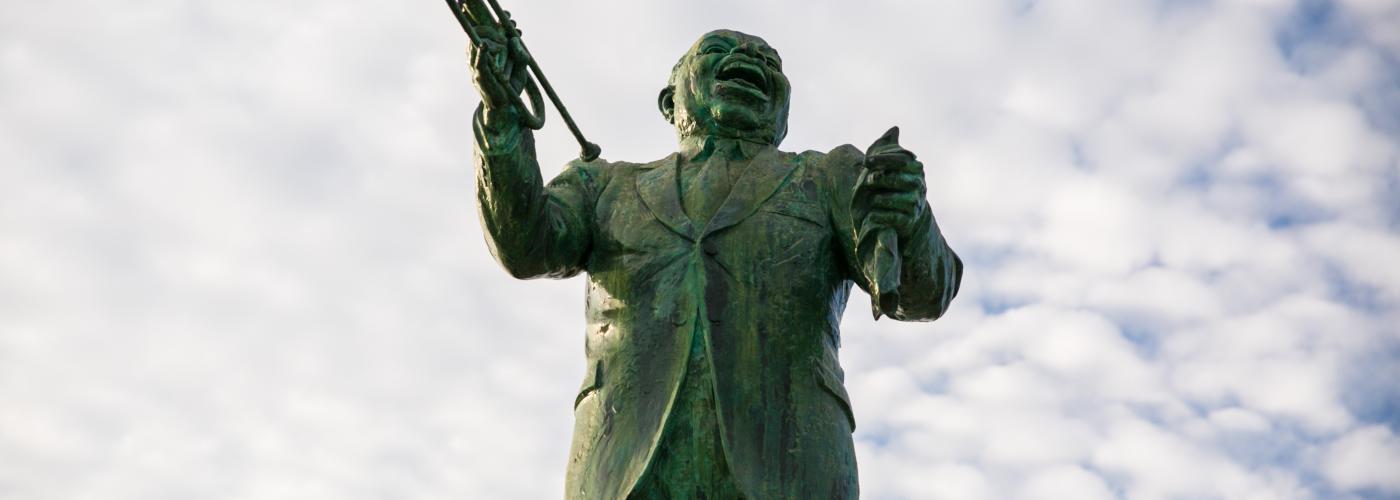Exhibition featuring rare Spanish documents comes to the Gulf Coast
“The Threads of Memory” explores Spain’s first 300 years in the United States
May 2011 | New Orleans, LA — For more than 300 years, Spanish explorers navigated, charted and settled much of the continent of North America and its waterways. These early colonists left an indelible imprint across the southern United States, their heritage embedded in the histories of our lands, rivers, bays and gulfs. This summer, a traveling exhibition coming to the Gulf Coast examines the centuries-old ties between the two countries—ties dating to the early 16th century, stretching through the charting of the Mississippi and the settlement of the West, and remaining vibrant today.
“The Threads of Memory: Spain and the United States (El Hilo de la Memoria: España y los Estados Unidos)” marks the U.S. debut of nearly 140 rare documents, maps, illustrations and paintings, many of which have never been displayed outside of Spain. The exhibition opens May 11 at The Historic New Orleans Collection, the final stop on a limited, three-city American tour. “The Threads of Memory” will be on view through July 10 at 533 Royal St. in the French Quarter. Admission is free, and the gallery is open 9:30 a.m.–4:30 p.m., Tuesday–Saturday, and 10:30 a.m.–4:30 p.m., Sunday.
The survival of these extraordinary materials, selected from the Archive of the Indies in Seville, is a testament to Spain’s pride in its role in the formation of the United States. The exhibition offers an opportunity to celebrate a common but often overlooked heritage.
“The exhibition shows a history forgotten,” said Falia González Díaz, exhibition curator and chief of conservation at the Archive of the Indies. “America’s colonial past did not begin in 1607 with the founding of Jamestown, but a century earlier, when Juan Ponce de León discovered Florida in 1513, and Spanish expeditions of exploration expanded the knowledge of the New World and its native inhabitants.”
“The Threads of Memory” is divided into 10 sections, each exploring a different aspect of Spanish colonial history, such as early exploration in Florida, the Spanish administration of Louisiana and Spain’s role in the American Revolution.
“It is difficult to single out one ‘must-see’ item, because all of the items on view are treasures,” said Alfred E. Lemmon, director of the Williams Research Center at THNOC. “Each piece illustrates how this region developed.” Lemmon went on to describe the exhibition as “a once-in-a-lifetime opportunity,” because Spain rarely allows these materials to travel abroad.
Among the items on display are a 1598 drawing of an American buffalo, a map of Pensacola Bay dating to 1698, family records documenting the Canary Islanders (Isleños) who emigrated to Louisiana in the 1770s and illustrations of soldiers’ quarters in Baton Rouge from 1788. In addition, a life-sized, full-length 1796 portrait of George Washington will be on loan from the San Fernando Royal Academy of Fine Arts in Madrid.
“While Louisiana is frequently identified with France, the importance of Spain to the development of Louisiana and the Gulf South is more critical than what immediately meets the eye,” said Lemmon. “When horrible fires destroyed New Orleans in 1788 and 1794, Spanish officials enacted far more stringent building codes, which protected many of the buildings you see today. They even helped protect the French language by issuing proclamations in French and in Spanish, publishing a French newspaper and encouraging the immigration of French St. Dominguan and Acadian refugees.”
New Orleans is the final city on the exhibition’s American tour. Prior to the display here, “The Threads of Memory” was on view at the New Mexico History Museum in Santa Fe and the El Paso Museum of History in Texas. Following its Gulf South visit, all materials will return to the Spanish archives.
“New Orleans is a key point in this exhibition, a perfect city for its closure,” said González Díaz. “And there could be no better place in New Orleans to present the exhibition than The Collection’s building on Royal Street, which is a Spanish colonial home.”
The exhibition is presented in English and in Spanish, with an accompanying full-color, bilingual catalogue detailing all of the documents on display and featuring essays on Spanish missions in the New World, Louisiana under Spanish rule and Spain’s role in the emergence of the United States. The catalogue is available in The Shop at The Collection for $65.
“The Threads of Memory” is organized by The Historic New Orleans Collection, Acción Cultural Española (AC/E), the Spanish Ministry of Foreign Affairs and Cooperation and the Spanish Ministry ![]() of Culture with support from the Embassy of Spain in Washington, D.C. Falia González Díaz of the Archive of the Indies curated the display, which is sponsored by Fundación Rafael del Pino.
of Culture with support from the Embassy of Spain in Washington, D.C. Falia González Díaz of the Archive of the Indies curated the display, which is sponsored by Fundación Rafael del Pino.
Exhibition Programming
In addition to the display, The Collection will host the following events and programs in conjunction with the exhibition “The Threads of Memory: Spain and the United States (El Hilo de la Memoria: España y los Estados Unidos).” All of the events below are free of charge.
Wednesday, May 11, 2011
Piano recital featuring Sergio de los Cobos
Exhibition viewing: 5–6:30 p.m.
Music: 6:30–8 p.m.
This event has been made possible by the Consul General of Spain in the Southwest and the Embassy of Spain. Seating is limited and reservations are required. Call (504) 523-4662 or email wrc@hnoc.org for details.
Bouligny Lecture Series on Spanish Louisiana
The Francisco Bouligny Lecture, hosted by The Historic New Orleans Collection since 2003, is an annual program examining the shared history between Spain and Louisiana. This year, in conjunction with the exhibition “The Threads of Memory,” The Collection will present an expanded series of four talks.
Each program will be held at The Collection, 533 Royal St., 6:30–8 p.m., with the exhibition open for viewing 5–6:30 p.m. These events are free and open to the public. Visit www.hnoc.org or call (504) 523-4662 for more information or to reserve seats.
Tuesday, May 17, 2011
Emily Clark, the Clement Chambers Benenson Professor in American Colonial History at Tulane University
“Family Geographies: Free People of Color in Spanish Colonial New Orleans”
Tuesday, May 24, 2011
Thomas E. Chávez, former director of the National Hispanic Cultural Center in Albuquerque and the Palace of the Governors History Museum in Santa Fe
“Spain and the Independence of the United States: An Intrinsic Gift”
Tuesday, June 14, 2011
Dennis Reinhartz, professor emeritus of history at the University of Texas–Arlington
“The European Mapping of the Gulf of Mexico and the Greater Southwest, 1492–1750”
Tuesday, June 21, 2011
Alfred E. Lemmon, director of the Williams Research Center at The Historic New Orleans Collection
“Following the Paper Trail: The Daily Life of a Spanish Colonial Document”
###
Editor’s Notes:
- Digital images of items from this exhibition are available. Please contact Lauren Noel (laurenn@hnoc.org or (504) 556-7655) with your request.
About The Collection
Founded in 1966, The Historic New Orleans Collection is a museum, research center and publisher dedicated to the preservation of the history and culture of New Orleans and the Gulf South. Located in the heart of the French Quarter, The Collection offers guided tours, free rotating exhibitions, a research facility and a museum shop. For more information, visit www.hnoc.org or call (504) 523-4662.
The Historic New Orleans Collection – Preserving our Past for a Brighter Future.
Contact:
Lauren Noel, Marketing Assistant
The Historic New Orleans Collection
(504) 556-7655 | laurenn@hnoc.org
Emily Schmidt, Communication Strategist
Gambel Communications
(504) 324-4242 | emily@gambelcommunications.com











